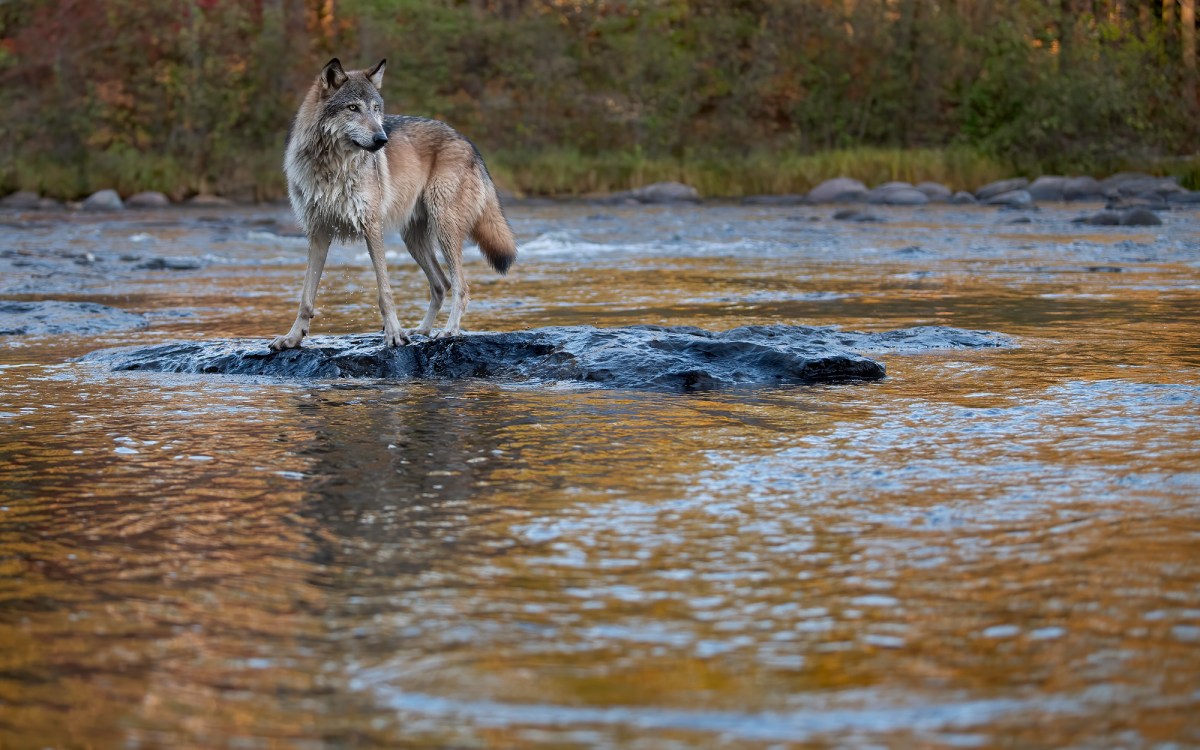The U.S. Fish and Wildlife Service announced Monday it would no longer write a national wolf recovery plan because gray wolves no longer need endangered or threatened species protections under the Endangered Species Act.
The federal agency had agreed to craft the plan as part of a 2023 settlement with the Center for Biological Diversity. That agreement would have forced the USFWS to map out a comprehensive path to recovery for gray wolves across the country, instead of focusing on individual states or regions. But it included a big caveat: If a plan “would not promote the conservation of the species,” then it wouldn’t be necessary.
And in Monday’s announcement, the USFWS used those exact words. It explained that gray wolf populations in the 44 states where they’re considered endangered and in Minnesota, where they’re labeled as threatened, have recovered to the point that “listing these entities is no longer appropriate under 4(a)(1) of the Endangered Species Act.”
What the announcement means for wolves, as well as sportsmen, ranchers, wildlife advocates, and wildlife managers, depends on who you ask. The Rocky Mountain Elk Foundation said Monday’s announcement merely reinforces the USFWS’ 2020 decision that gray wolves have met their national recovery goals.
“The Rocky Mountain Elk Foundation maintains that state wildlife agencies can and should sustainably manage recovered wolf populations just as they manage elk, black bears, deer and other wildlife species,” RMEF said in a statement Wednesday.
The Center for Biological Diversity, on the other hand, which filed the original lawsuit against the USFWS, told National Parks Traveler that the decision was “disappointing and dangerous.” The organization also said it plans to challenge the move.
While gray wolves occupy just a fraction of their historic range, they have slowly recolonized large portions of the northern U.S. from Minnesota to California. They’ve bounced on and off the endangered species list for years and are Congressionally delisted in the northern Rocky Mountain region, which includes Montana, Idaho, Wyoming, and the eastern thirds of Oregon and Washington. The first Trump administration removed endangered species protections for gray wolves across the country in 2020, but a federal judge overruled that decision in 2022, saying “the Service did not adequately consider threats to wolves” outside of the core Northern Rockies and Great Lakes populations.
Read Next: US Fish and Wildlife Director Calls Out Colorado Wolf Program. Could the Next Release Be Stopped?
Western states have since largely managed wolves with their own plans, and controversies around the species continue to make headlines. California wildlife officials decided in October to euthanize four wolves from one pack after “unprecedented” attacks that included 70 livestock depredations between March 28 and September 10. Colorado has continued releasing wolves after voters there passed a ballot measure requiring the state to reintroduce the species, but those efforts could be halted by the Feds.
Meanwhile, three bills sit before Congress seeking to permanently delist both gray wolves and grizzly bears. Two of them are individual bills, one focused on delisting wolves and one on grizzly bears, while a third effort is included in a Department of Interior funding bill.
Read the full article here





